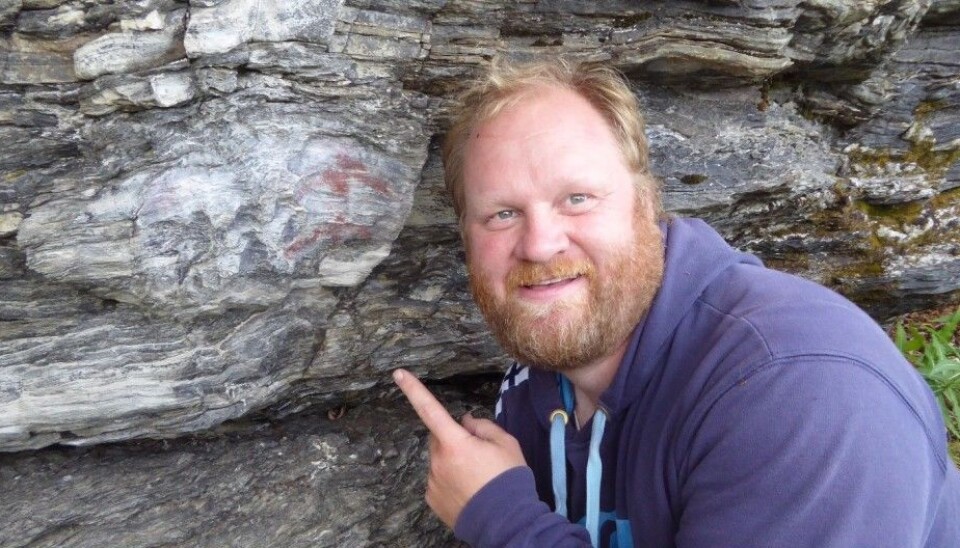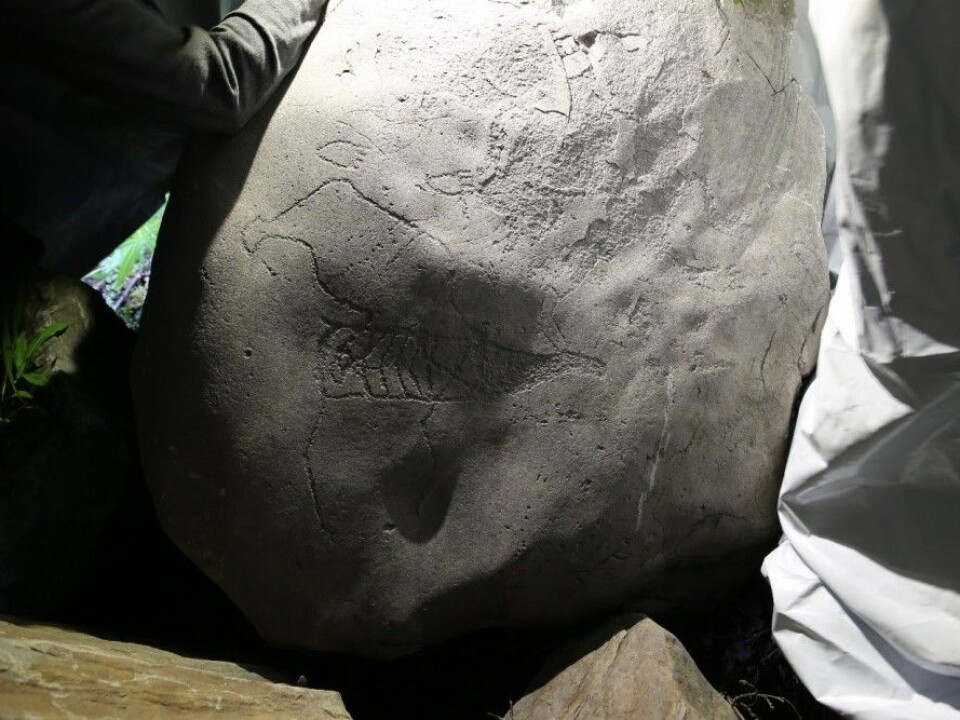
Two new sites found with Stone Age art
“The finding of several sites shows that the rock art was probably more common than we figured and it was linked to settlements,” says Jan Magne Gjerde, who discovered the figures.
The research project aimed at charting Neolithic camps or settlements and wanderings in Norway’s Vest-Finnmark County was just a month old when Researcher Jan Magne Gjerde at the Arctic University of Norway found the two figures.
“This is like a combined Christmas and a birthday for me because we rarely find new spots with petroglyphs,” he says.
Gjerde was doing initial fieldwork to find prospective new prehistoric settlements by the Alta Fjord and was taking soil samples.
“Then I got a feeling something was right behind me and turned around to look directly at the human figure.”

This was clearly a male, with its phallus, standing with his arms and legs spread.
“It doesn’t expess a whole lot on its own, but it signifies that people have had some sort of activities in front of these drawings They could have been rituals or sacrifices. Of course they could have lived here and wanted a decoration on their living room wall, so to speak, but we think the figures have a deeper meaning.”
The discoveries are not dated exactly but researchers think those who created the art lived sometime from 4,000 to 6,000 years ago.
Animal figures
“What we now see is that humans have made petroglyphs and engaged in activities in greater regions than we thought, and that is intriguing. It means that there are other places with rock art besides the major gathering spots in the areas where we find 7,000 rock carvings,” he says.

Alta is known for its extensive and magnificent rock carving art. Northern Europe’s largest collection of rock carvings made by hunter-gatherers is found here. In 1985 these were placed on Unesco’s World Heritage List. The listed artwork includes many thousand rock carvings and 50 rock paintings in the Alta Fjord area: Hjemmeluft, Kåfjord, Storsteinen, Amtmannsnes and Transfarelv, according to the website norgesverdensarv.no.
In addition to the human figure, Gjerde found a boulder with carvings of reindeer, bears and bear tracks in the course of a single week of field work.
“People were clearly aware of what the rock art meant and we have theories about the significance. But we are eager to find the answer to why the figures were painted and why here in particular.”
Maybe more common
Researchers have until 2021 in the current project to find out where and how people lived and roamed in Northern Scandinavia and especially in Vest-Finnmark during the Stone Age.
This summer, in addition to the two sites with rock art, the research team has registered new settlement sites at Sørøya and in the Alta Fjord. These will be investigated further with excavations next year, according to a press release from the University of Tromsø (UiT), The Arctic University of Norway.
“Our discovery of additional rock art sites might mean the artwork was more commonly produced than we thought and it was also more associated with camps or settlements. Where we find traces of long-term settlements or bigger congregations of people in one place we also find rock art. Petroglyphs were probably quite well integrated into the lives of Stone Age people,” says Gjerde to ScienceNordic.com’s partner forskning.no.
-------------------------------------
Read the Norwegian version of this article at forskning.no
Translated by: Glenn Ostling
































